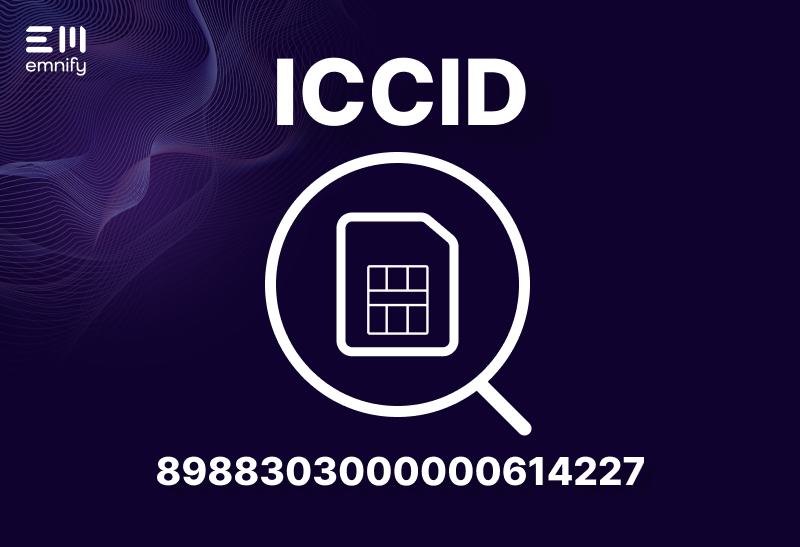

While it’s opened the door to many new possibilities, IoT has also brought new challenges to developers, manufacturers, and customers who rely on their products and services.
Many of the greatest IoT challenges today have been there from the beginning. Still, they’re becoming more pronounced as IoT becomes more prolific and accessible.
So what are these challenges and how can you address them? Let's take a look.
What will you find in this article?
- Solving security gaps
- Ensuring uninterrupted coverage
- Scalability
- Interoperability
- Bandwidth availability
- Limited battery life
1. Solving security gaps
IoT devices are prime targets for hackers and cybercriminals. From botnets to backdoors, these devices often serve as entry points for larger attacks on connected networks.
Take the Mozi botnet, for example. Emerging in 2019, it infected over 1.5 million IoT devices by exploiting weak passwords and unpatched vulnerabilities. Mozi's peer-to-peer architecture made it notoriously difficult to dismantle.
Even after a major takedown in 2023, its techniques resurfaced in threats like the Androxgh0st botnet, highlighting the persistent risks associated with unsecured IoT devices.
This problem isn’t going to just go away because it stems from some inherent issues with IoT devices.
IoT devices tend to have a limited power supply and need to last for years in the field on a single charge. As a result, they need to transmit and receive data using little power.
Adding encryption, authentication, and security protocols can significantly increase the power consumption of basic transmissions, so many IoT devices don’t have these capabilities.
Additionally, it’s almost inevitable that, over time, new vulnerabilities will be discovered in the device firmware as new technologies and techniques emerge to exploit it.
Without updates, these vulnerabilities can accumulate over the lifetime of the device. But unfortunately, IoT devices are typically too distributed for manufacturers to perform on-site updates and directly access the device. Remote firmware updates can consume significant power if the device doesn’t have enough data throughput.
Add the fact that IoT devices may rely on the end users’ network infrastructure (such as WiFi), and you have a perfect storm. The device becomes increasingly vulnerable to cyber attacks and can be used to access other devices and applications on the network.
The solution
Thankfully, low-power connectivity solutions continue to implement new security technologies. And this is an area where cellular IoT is particularly valuable.
Authentication and device security
Cellular networks authenticate devices through SIM cards, and security features like IMEI locks ensure that only the intended device can use a particular SIM card. Cellular networks also allow you to perform remote firmware updates as needed while consuming minimal power.
Firmware updates made secure
Remote firmware updates are necessary to patch vulnerabilities over a device's lifecycle. Cellular IoT simplifies this by securely delivering updates with minimal power consumption. Pairing updates with firmware signing ensures that only trusted updates reach your devices, blocking unauthorized changes.
Strengthening network communications
Providers like emnify close critical security gaps with features like virtual private networks (VPNs) and granular control over device communications. Meanwhile, approaches such as Zero Trust Network Access (ZTNA) are gaining traction, enforcing strict "trust no one" principles to further protect IoT ecosystems.
2. Ensuring uninterrupted coverage
To transmit and receive data, IoT devices need a network connection. Lose the connection, and you lose the device’s capabilities.
While there are numerous IoT connectivity solutions, they’re all best suited for different types of coverage. The solution you choose can severely limit where you can deploy. This makes coverage a constant IoT challenge.
For example, WiFi is a common choice for IoT connectivity. But your devices can only operate within a short range of a router, and you can only deploy your devices at locations that have WiFi. When the infrastructure isn’t available, you have to either pay to build it or outfit your devices with a backup solution that already has coverage.
Urban deployments can face network congestion and interference from overcrowded spectrums, while rural or industrial sites may lack network availability entirely. Extreme conditions, such as underground facilities or maritime environments, compound these challenges.
The solution
Several technologies provide wide coverage, enabling IoT devices to operate within a few miles of the network infrastructure.
Cellular IoT
Cellular networks are the go-to for many IoT applications, offering broad coverage in urban and suburban areas. With 5G, devices can now benefit from faster speeds, ultra-low latency, and support for millions of connections—ideal for real-time data transmission in smart cities or industrial IoT.
Low Power Wide Area Networks (LPWANs)
In remote or rural areas, LPWAN technologies like Sigfox and LoRaWAN provide a reliable alternative. Designed for long-range, low-power communication, LPWANs are perfect for devices that send small data packets intermittently, such as environmental sensors or asset trackers.
Converged cellular and satellite connectivity
For truly global operations, converged cellular-satellite networks are becoming more the norm. This connectivity option enables frictionless handoffs between terrestrial and satellite coverage, ensuring reliable connections even in remote locations.
A satellite constellation is a group of artificial satellites working together as a system. These constellations can provide permanent or nearly global coverage depending on how many satellites there are and their position in relation to the Earth. The bigger and denser the constellation, the closer it gets to providing real-time data." (Read more)
3. Scalability
IoT businesses often have hundreds millions of devices in the field.
As businesses scale, they often piece together their IoT stack, adopting different connectivity solutions for deployments in new regions. Each of these comes with different management platforms, support systems, and underlying technologies.
And suppose you have to fundamentally change your product to support a new connectivity solution. In that case, you need multiple SKUs for a single product. The larger the scale of your operations, the more overwhelming device management, and logistics become.
This is even a problem with cellular IoT, where connectivity is available worldwide but owned by disparate Mobile Network Operators (MNOs). To connect to a new carrier, you need a provider with roaming agreements with that carrier or a new SIM card.
Regional restrictions on permanent roaming and regulatory differences further complicate operations, especially in countries with strict local compliance requirements.
The solution
Global IoT SIMs with extensive carrier agreements
Some IoT connectivity providers simplify global deployments by creating pre-established agreements with multiple carriers within each country.
This setup enables a single global IoT SIM to dynamically switch to the best available network in any region, ensuring reliable connectivity without manual intervention.
.jpg?width=1080&height=500&name=Banner%20ads%20for%20blogs%20(2).jpg)
Such agreements also minimize disruptions caused by permanent roaming restrictions, allowing devices to remain operational even in complex regulatory environments.
Support for modern standards
Scalable IoT connectivity solutions now support technologies like Cat-M1, NB-IoT, and 5G, ensuring that devices can meet diverse operational demands—from low-power, long-range sensors to high-bandwidth applications.
By leveraging these innovations, IoT businesses can simplify global deployments, maintain regulatory compliance, and reduce operational overhead—no matter the scale of their operations.
4. Interoperability
One of the incredible things about IoT is the seemingly endless ways you can configure your tech stack to suit your unique circumstances.
But it also creates a challenge.
Not all IoT devices and solutions are compatible with each other or with your business applications. Adding new hardware and software to the mix may require you to make a chain reaction of changes to keep the functionality you need while accommodating the new tech.
There’s another way interoperability challenges IoT manufacturers. Some of the underlying tech your IoT solution depends on may be open source.
That isn’t a problem itself, but if that open source technology doesn’t have a regulating body to create a clear universal standard, you can wind up with different businesses and/or countries using different variations of the open source tech.
This makes it difficult to add technology from a different vendor or deploy your IoT solution in a new country. It’s certainly not a problem for every IoT application, but some industries need to accelerate their adoption of universal standards to improve interoperability.
Data sharing adds another layer of complexity. Devices often produce data in different formats—JSON, XML, or proprietary models—making communication between systems a struggle. Differences in data protocols and communication mechanisms can also pose challenges to data compatibility.
Common communication data protocols and data exchange and communication standards are highly recommended in order to lower the manpower required for these projects.
The solution
Thankfully, most components of your IoT stack are relatively easy to exchange for other tech. And the trend within the industry is to make IoT solutions versatile by making integration as simple as possible.
Establishing standardized protocols and frameworks across IoT devices and systems is also an effective solution to the interoperability challenge. By embracing and implementing industry-wide standards, devices from different manufacturers can communicate more smoothly, reducing the complexity and costs associated with IoT deployments.
Organizations like one M2M and the IPSO Alliance offer recommendations and information-sharing on interoperability but need necessary standards that can support a deeper network of devices. Without adopting interoperability standards, we remain further apart than we should be.
5. Bandwidth availability
Radio Frequency (RF) bandwidth is a finite resource shared globally. Even with billions of connected devices, there’s more than enough to go around. But when too many of these devices use the same frequency bands in the same location, their signals interfere with each other.
For instance, in apartment buildings, multiple Wi-Fi networks operating on the same 2.4GHz or 5GHz bands can interfere with each other, leading to connectivity issues.
Similarly, in IoT deployments with numerous devices in relative close proximity, overcrowded frequency bands will grow increasingly crowded. Signal interference and the availability of bandwidth are something manufacturers need to be aware of. Thankfully, there are several ways the industry is addressing this.
The solution
Licensed spectrum usage
MNOs worldwide pay for a license that essentially privatizes segments of the RF spectrum, like a toll lane on a highway, making it so that only their customers can access this bandwidth. Different MNOs who operate in the same area each have their own licensed bands, which helps decrease the likelihood of interference.
Unlicensed spectrum and LPWANs
Some IoT solutions, like LoRaWAN, use unlicensed bands available to the public. These can be prone to interference in high-traffic areas, but this flexibility can help businesses avoid concentrating their devices on already crowded bands.
Advancements in cellular IoT
Emerging technologies such as Narrowband IoT, for example, is a cellular network technology that uses narrower bands, including the “guard bands,” which normally serve as unused gaps between networks.
Additionally, the rollout of 5G networks is expanding available bandwidth, accommodating a higher density of IoT devices with improved efficiency.
Notably, the introduction of Reduced Capability (RedCap) 5G, also known as NR-Light, is set to enhance IoT connectivity by providing a low-bandwidth 5G specification tailored for devices like with lower performance requirements. The technology is designed to enable cost-efficient and energy-friendly connectivity for devices that do not require high data rates and where latency is less critical. These include industrial sensors or monitoring systems.
.jpg?width=1080&height=500&name=Banner%20ads%20for%20blogs%20(3).jpg)
6. Limited battery life
Most IoT devices have small batteries. This is mainly because the devices are often incredibly small—and new generations of IoT technology are trending smaller and more efficient devices and components.
Larger batteries could restrict a device’s use cases or limit where and how the device can be installed. For example, putting a larger battery on a predictive maintenance sensor could prevent you from installing the sensor where it would be most protected from extreme temperatures, debris, impact, and other conditions that could cause damage.
For devices that spend the majority of their lifecycle in the field without access to another power source, the battery is designed to last for years. But it can only last all that time if the device’s regular operations drain minimal power. Transmitting or receiving data for extended periods drains too much battery life.
The solution
Newer networking technologies like NB-IoT and LTE-M have power-saving features like Power-Saving Mode (PSM) and Discontinuous Reception (DRX). These allow devices to "sleep" for extended periods, waking only to perform essential tasks like data transmission.
For even greater efficiency, Extended DRX (eDRX) lets devices remain dormant longer, significantly reducing power consumption and enabling batteries to last up to 10 years or more.
But many older technologies still in use today don’t have these capabilities, leaving businesses to choose between too little data throughput and too much power consumption.
Specialized IoT routers and gateways
Another way manufacturers can make more efficient use of their batteries is with specialized IoT routers and gateways. These pieces of network infrastructure can serve as intermediaries between IoT devices and the applications and network entities they need to communicate with.
The gateway or router can support the more complicated protocols and security processes like encryption and authentication, keeping devices secure while minimizing their power consumption.
Prepare your business for the future
As 2025 creeps upon us, it’s clear that the challenges—from securing vast networks of devices to managing bandwidth and scaling operations globally—are significant. However, the solutions are equally dynamic.
Success in the future of IoT will belong to those who act decisively and invest in the right tools today. Every choice you make positions your business to outperform the competition and seize new market opportunities.

With a career spanning over 18 years in storytelling and content creation, Bronwyn translates technical concepts and ideas into snackable and easy-to-digest content.

.jpg?width=1080&height=500&name=Banner%20ads%20for%20blogs%20(1).jpg)


